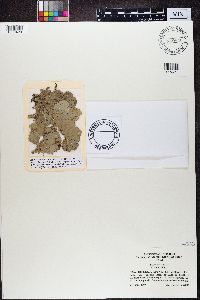University of Minnesota
http://www.umn.edu/
612-625-5000
http://www.umn.edu/
612-625-5000
Minnesota Biodiversity Atlas
Dataset: MIN-Lichens
Search Criteria: United States OR USA OR U.S.A. OR United States of America; Oregon; Jackson; excluding cultivated/captive occurrences
1
Page 1, records 1-14 of 14
Bell Museum lichens | |
MIN:Lichens | Nephroma helveticum Ach. 627192[]Sipe, F. 5011930-02-21 United States, Oregon, Jackson, Eagle Point, 42.47083333 -122.7908333 |
MIN:Lichens | Bryoria fremontii (Tuck.) Brodo & D. Hawksw. 744066[]Henderson, L. 121731930-03-28 United States, Oregon, Jackson, Elake Creek |
MIN:Lichens | Peltigera canina (L.) Willd. 744215[]Sipe, F. 6461931-08-00 United States, Oregon, Jackson, Rogue River |
MIN:Lichens | 744217[]Sipe, F. 5901931-08-00 United States, Oregon, Jackson, Eagle Point |
MIN:Lichens | Letharia vulpina (L.) Hue 825099[]Jones, G. 450261967-07-01 United States, Oregon, Jackson, Near Vidae Falls; Crater Lake National Park, 42.88425 -122.09954 |
MIN:Lichens | Phylliscum demangeonii (Moug. & Mont.) Nyl. 826542[]Harris, S. 35801936-06-30 United States, Oregon, Jackson, Union Creek |
MIN:Lichens | Peltigera aphthosa (L.) Willd. 826543[]Harris, S. 35751936-06-30 United States, Oregon, Jackson, Union Creek |
MIN:Lichens | Bryoria fremontii (Tuck.) Brodo & D. Hawksw. 873591[]Harris, S. 35771936-06-30 United States, Oregon, Jackson, Union Creek |
MIN:Lichens | Bryoria fremontii (Tuck.) Brodo & D. Hawksw. 873592[]Harris, S. 3576B1936-06-30 United States, Oregon, Jackson, Union Creek |
MIN:Lichens | Nephroma resupinatum (L.) Ach. 891437[]Tucker, S. 371132000-08-10 United States, Oregon, Jackson, 1 Mi Ne of Gold Hill, 42.452605 -123.00709 |
MIN:Lichens | Cetraria canadensis (Räsänen) Räsänen 895086[]Harris, S. 3576A1936-06-30 United States, Oregon, Jackson, Union Creek |
MIN:Lichens | Hypogymnia imshaugii Krog 895087[]Harris, S. 35741936-06-30 United States, Oregon, Jackson, Union Creek |
MIN:Lichens | Alectoria sarmentosa (Ach.) Ach. 895088[]Harris, S. 35731936-06-30 United States, Oregon, Jackson, Union Creek |
MIN:Lichens | Lobaria hallii (Tuck.) Zahlbr. 880846[1380429]Newberry, C. United States, Oregon, Jackson |
1
Page 1, records 1-14 of 14
Google Map
Google Maps is a web mapping service provided by Google that features a map that users can pan (by dragging the mouse) and zoom (by using the mouse wheel). Collection points are displayed as colored markers that when clicked on, displays the full information for that collection. When multiple species are queried (separated by semi-colons), different colored markers denote each individual species.
